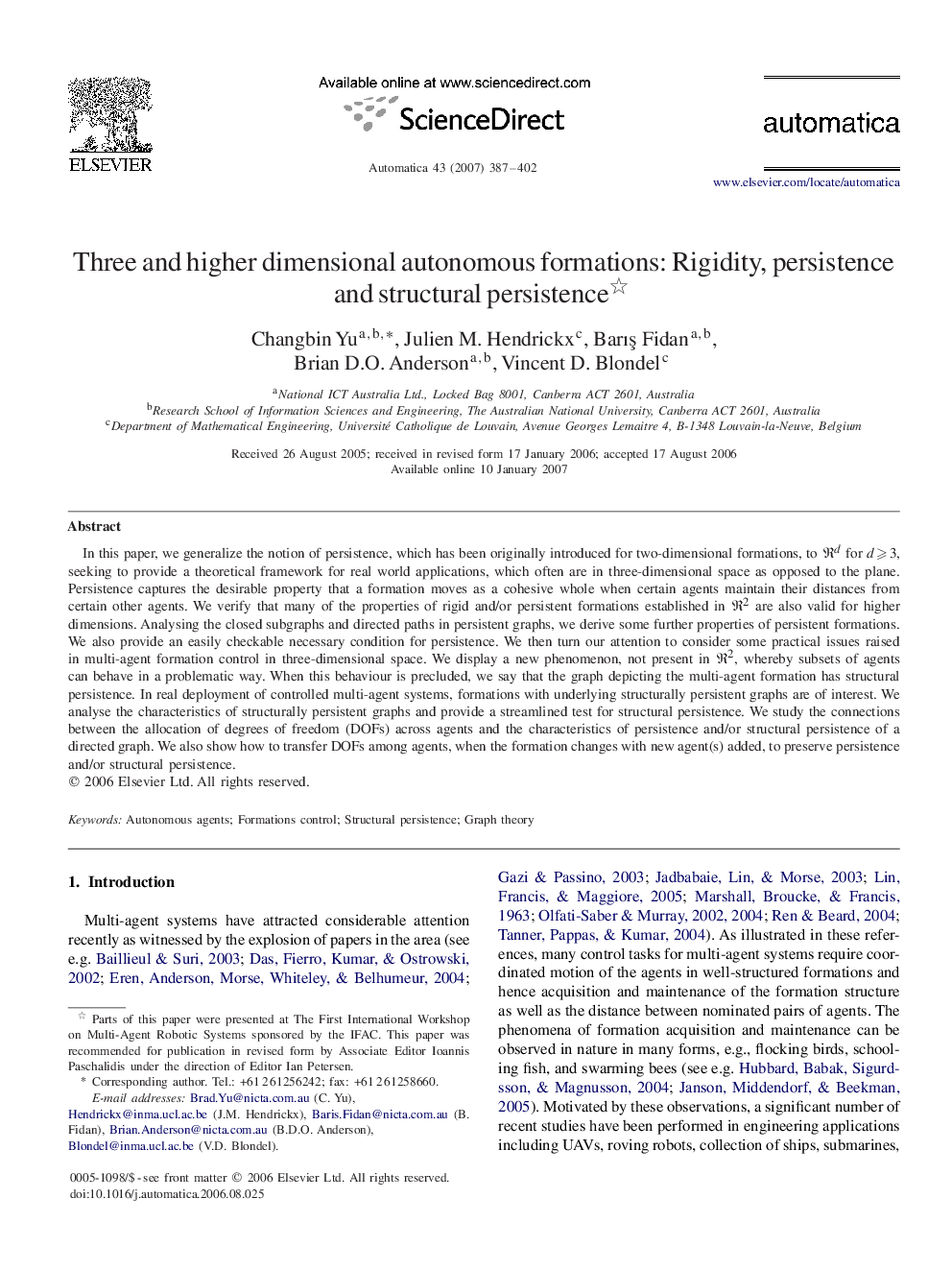| Article ID | Journal | Published Year | Pages | File Type |
|---|---|---|---|---|
| 698589 | Automatica | 2007 | 16 Pages |
In this paper, we generalize the notion of persistence, which has been originally introduced for two-dimensional formations, to RdRd for d⩾3d⩾3, seeking to provide a theoretical framework for real world applications, which often are in three-dimensional space as opposed to the plane. Persistence captures the desirable property that a formation moves as a cohesive whole when certain agents maintain their distances from certain other agents. We verify that many of the properties of rigid and/or persistent formations established in R2R2 are also valid for higher dimensions. Analysing the closed subgraphs and directed paths in persistent graphs, we derive some further properties of persistent formations. We also provide an easily checkable necessary condition for persistence. We then turn our attention to consider some practical issues raised in multi-agent formation control in three-dimensional space. We display a new phenomenon, not present in R2R2, whereby subsets of agents can behave in a problematic way. When this behaviour is precluded, we say that the graph depicting the multi-agent formation has structural persistence. In real deployment of controlled multi-agent systems, formations with underlying structurally persistent graphs are of interest. We analyse the characteristics of structurally persistent graphs and provide a streamlined test for structural persistence. We study the connections between the allocation of degrees of freedom (DOFs) across agents and the characteristics of persistence and/or structural persistence of a directed graph. We also show how to transfer DOFs among agents, when the formation changes with new agent(s) added, to preserve persistence and/or structural persistence.
